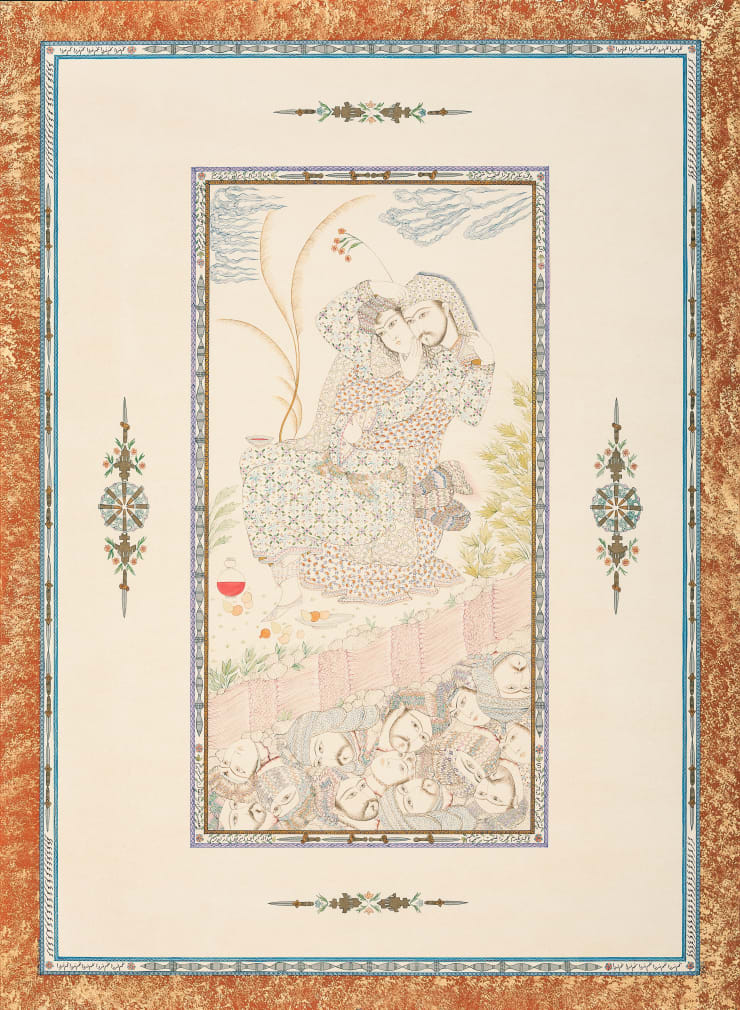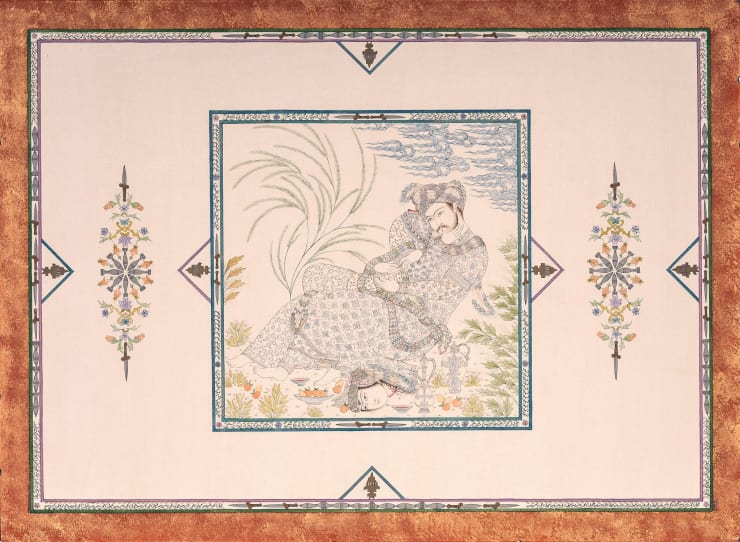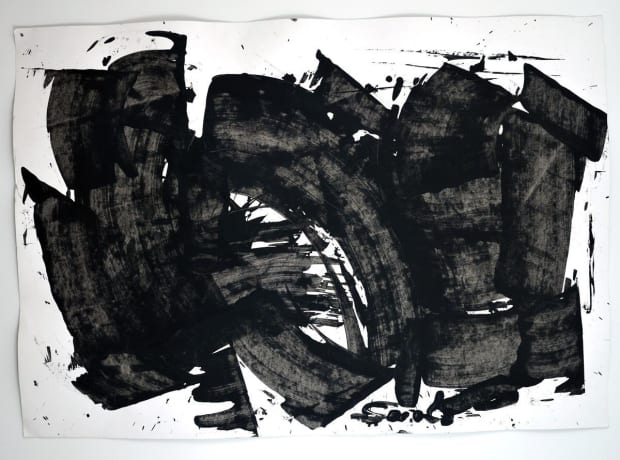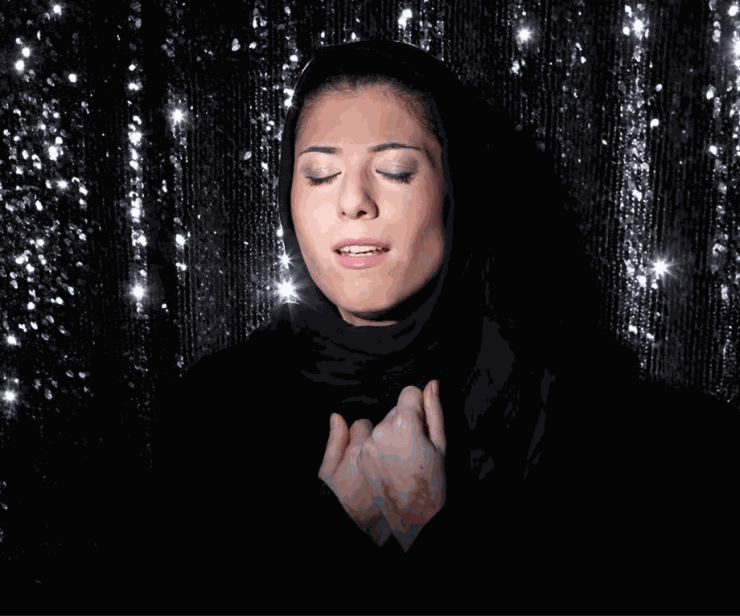-
Frieze New York 2023
-
Press Release
Dastan is pleased to announce its participation in Frieze New York 2023. The art fair will be open to public viewing from May 17 to 21, 2023. The presentation marks Dastan's fifth participation in Frieze New York. The artists featured in the booth include the late renowned painters Behjat Sadr (1924-2009) and Farideh Lashai (1944-2013), as well as contemporary painter Farah Ossouli (b. 1953), multi-disciplinary artist Bita Fayyazi (b. 1962), photographer and video artist Newsha Tavakolian (b. 1981).
Featuring a selection of artworks by five Iranian female artists who have been a source of inspiration for several generations, the presentation aims to highlight the broad inter-generational inspirations each artist has enabled and the social changes they have made possible through developing their practices and careers.
In the recent several months, the events within Iran have been continuously part of the news cycles of global media. As so, being more exposed to the situation, many international viewers have had the opportunity to take a more thorough, multi-dimensional, and contemplative view of the present-day circumstances in the country. Reflecting on what has been happening in the country for the past year and the long-standing range of sociopolitical tensions, the presentation brings together five artists from multiple generations, with lives spanning over a century. This allows the viewer to meditate on how artists have constantly envisioned an alternative present and future while encouraging and inspiring others.
Without intending to find common ground in their practice, these artists have had the will to express themselves against limitations within a patriarchal society and a complex apparatus of power whose exercise of social control hinges on women’s bodies. Each of these artists bears traces of survival, which has led her to form a community. What each shares with other women in this loose grouping are using art, artistic practice, and way of living as forms of resistance, inspiration, community-building, creating alternative narratives, and empowering women of younger generations. As so be it the verbalization of ideas, artistic expression, or the trajectory of life and career, directly or indirectly, these artists have nurtured generations of artists, curators, and practitioners in the art scene, as well as defining new paths and approaches, and directions.
Their practice is a seamless braiding of personal history and politics, lived through bone and blood, arriving at their unique language. Whether through dense black oil color (Behjat Sadr), painterly ventures (Farideh Lashai), meticulous illuminations (Farah Ossouli), stark imagery (Bita Fayyazi), or sympathetic portraits (Newsha Tavakolian), each of these artists has a story to tell.
-

Bita Fayyazi
Beautiful Creatures - One Foot Grounded, The Other Dancing Till … (The Red Shoes Classic), 2014-2023
Weaving Yarn, throw-away yarn (recycled), broken ceramics, metal wire
Approx: 365 x 60 x 40 cm -
Bita Fayyazi's work is inherently collaborative and made of the fabric of social participation. She often initiates her projects by inviting artists, enthusiasts, and people with diverse backgrounds, moving forwards with a polyphony of ideas, and reconstituting the energies of the many toward an uncertain resolution. Eventually, the outcome becomes less important than the process. The collective, plural ‘doing’ and the love of doing have shaped her artistic practice and the careers she has influenced over almost three decades.
Bita Fayazzi's “Beautiful Creatures - One Foot Grounded, The Other Dancing Till … (The Red Shoes Classic)” (2014-2023), presented at the booth, depicts a pseudo-plant that hangs midair, seemingly descending from the sky, and is not yet rooted in the soil. Despite this, it grows in every direction, but its growth appears more organic. The artwork speaks of a thorough pursuit of weaving, similar to Fayazzi's artistic practice. She creates an ever-growing whole consisting of repetitive handiwork.
-

Farideh Lashai
"Untitled" from the "The Foliage in Darkness", 2008
Oil, Acrylic, and Graphite on Canvas
176 x 183 cm
-
Farideh Lashai was a renowned painter, teacher, writer, and translator and never ceased experimenting with artistic expression, pioneering in forms such as video art and installation. Amidst revolution, immigration, war, and sickness, Farideh was an artist leading a remarkable life. Apart from her artistic practice, she was prolific in expressing her ideas through her writing. In her memoir-like novel, for instance, apart from discussing the atmosphere of 1980s Iran and the ongoing war, she openly expresses her personal life, feelings, and concerns. Moreover, as a teacher, she encouraged students to experiment with their subject matters and themes.
Like many of her later work, the “Untitled” (2008) piece from her “The Trees” series depicts an ephemeral outlook, a fleeting moment, a fading sense of recall, and a memory dissolving into the background of the past.
-

-
Farah Ossouli is one of the most respected and well-renowned Iranian painters of her generation. In addition to shaping a novel approach towards Persian “Miniature” Painting and creating a contemporary discourse that takes this form to new territories, she has been involved in numerous collaborative initiatives and projects. In 2001, she was a co-founder of Dena Collective, a non-exclusive collective of artists which sought to promote the careers of Iranian women during a time when they were severely underrepresented. Moreover, believing that “the spirit of the times reveals itself in art before showing up in social movements”, she has been supporting and promoting the work of younger generations for decades through advising and promoting initiatives that empower fresh voices.
In “David and I”, she builds her image on Jacques-Louis David's “The Intervention of the Sabine Women” (1799). David's painting represents a story from Roman mythology and is replete with symbolism that illustrates Rome as a brutal ancient entity while also portraying Sabine women as new unconventional agents. It highlights the critical role of women as peacemakers and diplomats in Roman society. In her piece, Farah Ossouli seeks to present a further reading of the work, showing the struggle between the past and the present, older norms, and new, even unwanted, change. She looks at Sabine women as a symbol for the ‘unconventional’ and creates her work around a question of social transformation and change.
-

Behjat Sadr
"Untitled", 2009
Oil on Paper
100 x 70 cm
-
In addition to being regarded as one of the pioneering modernist painters of Iran, working across several media and making collages and kinetic sculptures, Behjat Sadr was one of the very first art professors at the University of Tehran, where she taught for over twenty years. In her paintings, Sadr often leaves a trace of how she interacted with her surface: simultaneously marking and wiping it. It feels alive and dynamic even years after the painting has been completed. She refers to a movement as if she were a teacher and shows the viewer how an image is made.
The brushstrokes dominate the paper in the “Untitled” (2009) presented here by Dastan. The layer of oil is thin enough for the white under to shine through, yet heavy to make it crumble.
-
Installation shots
-

-
-

Newsha Tavakolian
From The "Listen" Series, 2010
6 channels video installation
Edition of 5 plus 2 artist's proofs -

Newsha Tavakolian
From The "Listen" Series, 2010
6 channels video installation
Edition of 5 plus 2 artist's proofs -

Newsha Tavakolian
From The "Listen" Series, 2010
6 channels video installation
Edition of 5 plus 2 artist's proofs
-

Newsha Tavakolian
From The "Listen" Series, 2010
6 channels video installation
Edition of 5 plus 2 artist's proofs -

Newsha Tavakolian
From The "Listen" Series, 2010
6 channels video installation
Edition of 5 plus 2 artist's proofs -

Newsha Tavakolian
From The "Listen" Series, 2010
6 channels video installation
Edition of 5 plus 2 artist's proofs
-
-
Newsha Tavakolian is one of the most well-known contemporary Iranian photographers. Her work often revolves around life in the city. She observes and intensely experiences things in her artistic practice, from socio-political turmoil to personal suffering. She curiously looks for how an event affects diverse groups of people and documents it all. She tries to amplify the stories of people who conventionally do not stand out. In addition to her practice, she has supported fellow photographers, artists, students, and younger generations, presenting their work at several international events and venues.
The series “Listen” (2010) shows powerful photographic portraits of Iranian women singers whose voices are often censored in the country. The images capture the performers' intensity and emotion while highlighting their challenges in pursuing their art in a restrictive environment.
No images available.















